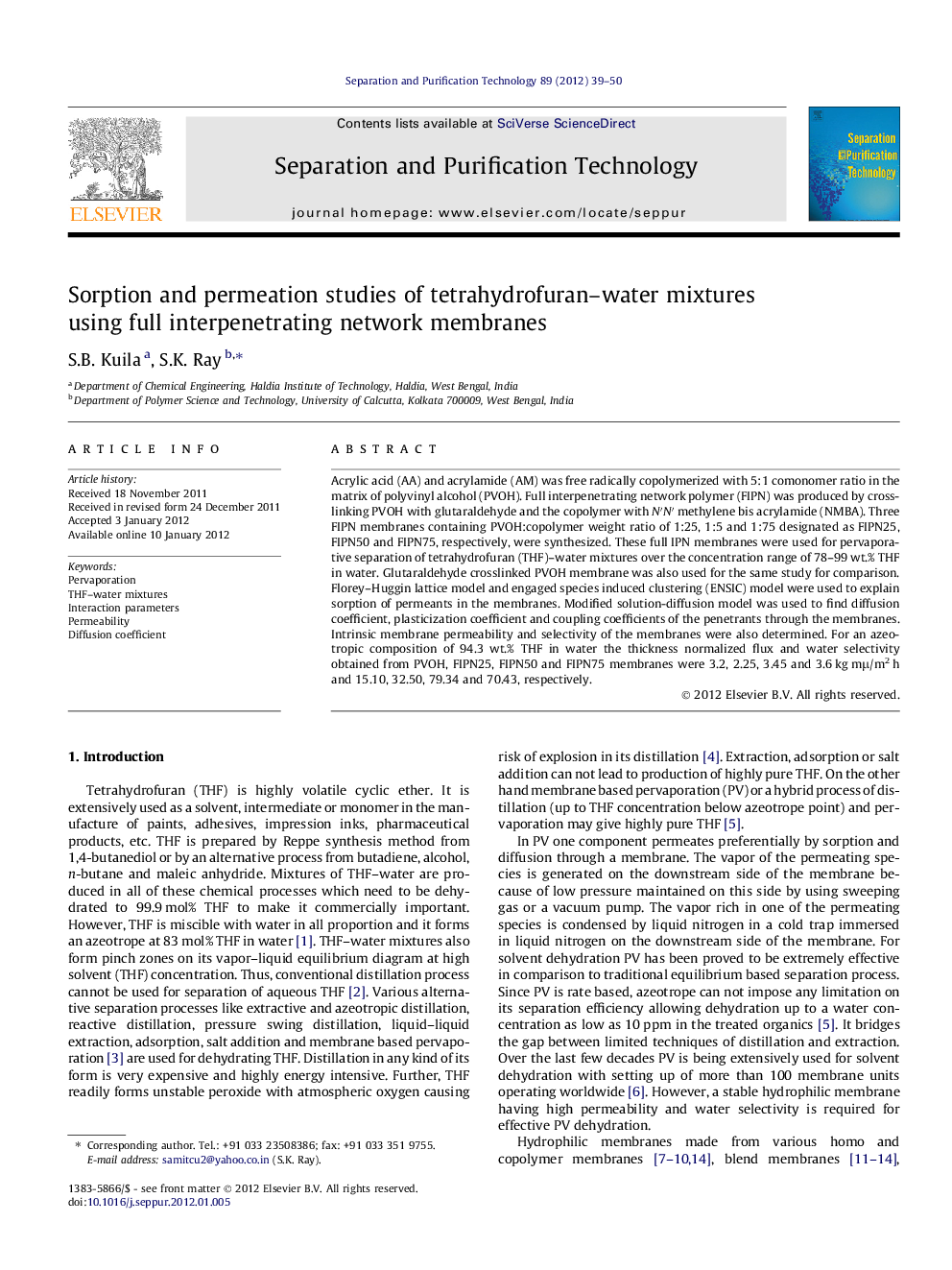| Article ID | Journal | Published Year | Pages | File Type |
|---|---|---|---|---|
| 642249 | Separation and Purification Technology | 2012 | 12 Pages |
Acrylic acid (AA) and acrylamide (AM) was free radically copolymerized with 5:1 comonomer ratios in the matrix of polyvinyl alcohol (PVOH). Full interpenetrating network polymer (FIPN) was produced by crosslinking PVOH with glutaraldehyde and the copolymer with N′N′ methylene bis acrylamide (NMBA). Three FIPN membranes containing PVOH:copolymer weight ratio of 1:25, 1:5 and 1:75 designated as FIPN25, FIPN50 and FIPN75, respectively, were synthesized. These full IPN membranes were used for pervaporative separation of tetrahydrofuran (THF)–water mixtures over the concentration range of 78–99 wt.% THF in water. Glutaraldehyde crosslinked PVOH membrane was also used for the same study for comparison. Florey–Huggin lattice model and engaged species induced clustering (ENSIC) model were used to explain sorption of permeants in the membranes. Modified solution-diffusion model was used to find diffusion coefficient, plasticization coefficient and coupling coefficients of the penetrants through the membranes. Intrinsic membrane permeability and selectivity of the membranes were also determined. For an azeotropic composition of 94.3 wt.% THF in water the thickness normalized flux and water selectivity obtained from PVOH, FIPN25, FIPN50 and FIPN75 membranes were 3.2, 2.25, 3.45 and 3.6 kg mμ/m2 h and 15.10, 32.50, 79.34 and 70.43, respectively.
► Acrylic acid and acrylamide is copolymerized in the matrix of polyvinyl alcohol. ► Full interpenetrating network (FIPN) is produced by crosslinking both polymers. ► FIPN membranes showed good flux and water selectivity for THF–water mixtures. ► Sorption of membranes are explained in terms of thermodynamic interaction parameters. ► Modified solution-diffusion model is used to explain diffusion through the membranes.
